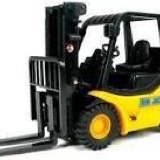Title Page
-
Site conducted
-
Conducted on
-
Prepared by
Door Labeler LPA
Receiving door
-
Does the labeler have paperwork and labels ?
-
Does the labeler know the process to acquire the paperwork and labels ?
-
Does the order have fire labels/Compliance labels ?
-
Does the labeler have all the fire labels associated with the order?
-
Does the labeler know how to use Label tracker and ask for missing Fire labels ?
-
Is the door identified ?
-
Is it an active door ?
Door Inspection
-
Before starting the inspection, does the labeler have paperwork, white labels, and necessary compliance labels for the current order ?
-
Ask the labeler to have everything before starting the inspection.
-
Does the door have the SO#, line # & mark # located on the door ?
-
Was the labeler able to find the corresponding specification within the shop floor document ?
Verifying Door Specifications : Is the door free of the following Non-Conformities ?
-
Top channel feature (does the door require a recessed, reversed, flush, or flush and sealed channel type)
-
Bottom channel feature (does the door require a recessed, reversed, flush, or flush and sealed channel type)
-
Core type (does the door require honeycomb core, steel stiffened core, polystyrene core, etc.)
-
Finish Type (Primed, no prime, no prime/no bondo, no prime/metal bondo, etc.)
-
Handing (LH, RH, LHR, RHR)
-
Dents
-
Grind marks with visible graining or creating an excessive dip or hole.
-
Improperly dressed weld marks with visible deformation of the visible surface.
-
Improperly finished plastic body filler (also referred to as Bondo) work including but not <br>limited to lines, pitting, patchiness, cracking, etc.
-
Deep scratches reveal the bare metal through the coat of primer.
-
Hardware preps that contain plastic body filler within the cutouts.
-
Hardware preps blocked by internal components such as the core or reinforcements.
-
Glue seeping out from the door or left on the surface of the door.
-
Sub-components shall not protrude past the end of the skin of the doors (I.E. top and <br>bottom channel assemblies, continuous hinge reinforcements, etc.)
Reporting of Non-Conformities
-
Was the Inspection process free of Non-Conformities?
-
Does the labeler know the process to report a non-conformity ?
-
Was the nature of the non-conformity determined ? (Specification or asthectic reason)
-
If the door does not meet a specification, was Rework Request slip filled out <br>and taped it to the face of the door
-
If the non-conformity was due to aesthetics, was the Door Aesthetics Tracker used ?
Labeling the door
-
Labels should only be applied when door passes inspection
-
Is the white label applied on the hinge reinforcement that is 2nd from the top of the door (does not apply to continuous hinge doors, place the white identification label in the middle of the door hinge edge in this case)
-
Make sure that Active and Inactive doors are properly identified with the correct label by LHA or RHA (Active Door) Page 1 or LHI or RHI (Inactive Door)
-
Are the labelers following the chart for label placement?
-
Prior to applying the compliance label(s), wipe the surface where the label is to be applied with a rag to remove any debris on the door’s edge.
-
Make sure correct labels are identified according to the specifications and applied to the correct door based on fire rating
-
Label is applied to the door edge.
-
Use a roller and roll along the label to ensure proper adhesion to the door.
-
If the compliance label is of the metal variety (called out as MTL-Label Type] on the order) the metal label will need to be installed using rivets and a rivet tool in the pre-punched holes on the door. The hole location should follow the same placement locations as the mylar labels.
-
Use of rivet and proper procedure to install the label into the door












